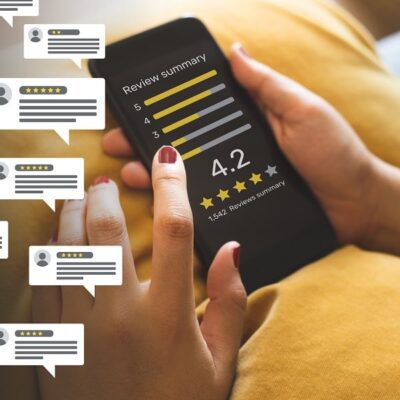“Oh, I get by with a little help from my friends…” —The Beatles, 1967
Well, the Beatles sang it in 1967 and it’s still true today: everything’s easier when you have help. That includes marketing and growing your business.
When you’re a small business, it can be tough to find the time — and physical resources — to put into your marketing efforts. If you don’t, however, your business will stagnate. That’s a vicious cycle you literally cannot afford to be in! Partnership marketing is one way to overcome the financial and physical marketing limitations you face.
Partnership marketing involves crafting a marketing campaign between two businesses for the benefit of everyone involved. Done right, partnership marketing can drive growth and increase revenue for both brands. In order to be successful at partnership marketing, however, you need to understand what it takes to make a good marketing partner and a plan once you find one.
What Makes A Good Marketing Partner?
Picking a good marketing partner — like picking a potential mate — isn’t always easy. Before you “swipe right” on any potential matches, make sure that they can bring as much to the relationship as you do. Obviously, you can’t go into a partnership with any direct competitors. Ideally, however, your marketing partner should also:
Involve a brand that appeals to the same type of consumers that you court.
You want a partner that your customers will be pleased to see you with. The matchup between your brands should feel natural and make sense, not leave consumers wondering what you see in each other. For example, think “Betty Crocker and Hershey’s chocolate” — a match that feels instinctive to a lot of bakers everywhere.
Have the same kind of standards and ethics your brand espouses.
If you put out a high-quality product and believe in personalized customer service, for example, don’t partner with a brand that specializes in discount good and sacrifices service in order to give lower prices. Your reputation will take a hit if your partner disappoints your customers. By the same token, however, your credibility can soar through a partnership with a brand that is held in high esteem by its audience. Procter & Gamble, for example, partnered with the National Breast Cancer Foundation by giving its products a pink makeover — and simultaneously gained a lot of emotional currency from consumers.
Be able to compliment your business as much as you compliment their business.
A partnership is always destined to last a longer when both halves bring something to the table that the other person needs. Think about what any potential partner can provide. Maybe you want a partner that can help you reach new people — or, maybe you need a partner that can help you engage the customers you already have. Intel, for example, partnered with the makers of various personal computers and made millions of otherwise technologically-illiterate consumers aware of their brand. The phrase “Intel Inside” became an automatic hallmark of quality for many people looking for a PC.
How do you pick the milk to your cookies or the peanut butter to your jelly? Carefully. When you’re picking a brand for your marketing partnership, there’s no substitute for careful consideration and a lot of research.
How Do You Use A Marketing Partnership To Drive Growth?
If you look carefully at what makes a good marketing partner in the first place, you can probably start to see why marketing partnerships can be great for growth. The right marketing partner can help you expand your reach, deepen your connections and engagement with existing customers, and increase your credibility.
However, a mutual endorsement is only part of a successful partnership marketing plan. You still have to invest in marketing efforts that will help your business grow. Here are some of the most successful partnership marketing methods you can use (even if you don’t have a big budget):
Cross-Promotions
One of the top ways that you and your marketing partner can help each other is through cross promotions. When you have something to sell that goes well with what your marketing partner has to sell, a cross-promotion can help you both reach new customers. Some ways to make it work include:
- Bundled products (like how a free trial subscription of McAfee Security comes with many new computers)
- In-store coupons or flyers advertising your partner’s promotions (which can also improve your local search marketing efforts)
- Coupons for a partner’s related product on your website
- Exclusive offers and discounts for new consumers who purchase something from your partner
Cross promotions like this show consumers that you and your partner have a lot of trust for each other. Consumers that trust one partner is more apt to trust the other — which means that they may be more willing to give the unknown brand a try.
Social Media Recognition
Social media should always play a part in your partnership marketing activities. You want to get the association between your brands out there in people’s mind through:
- Banner Ads
- Text links
- Tagged posts
Don’t confine your social activity to just one platform. All the platforms you and your partner use — Facebook, Twitter, Instagram, and others — should echo each other.
Content Sharing
New, interesting, useful, and engaging content is absolutely necessary if you want to keep the attention of your consumers and grow your brand.
You can work with your marketing partner on content by sharing:
- Articles — This can include opinion pieces, reviews, recipes, how-to guides, and more, all depending on what you have to offer.
- Infographics — Aside from sharing data, infographics are great at reinforcing the partnership in consumers’ minds by showing a partnership’s brand images together.
- Videos — You can show yourself working with your partner’s products, and vice-versa, to create something or solve a problem for your consumers.
Developing your content in collaboration with another brand can make it easier to provide consumers with the volume and quality of content they expect.
Wrapping It Up
If your brand isn’t particularly savvy at marketing, a partnership with one that is can give you the scalability you need to expand your reach and drive consumer interest. The mechanics of partnership marketing aren’t hard. In fact, you can split a lot of the work between you on social media and in content development.
What’s difficult about partnership marketing is finding the right partner. Find one that matches your brand in quality and a willingness to commit as deeply to the partnership’s success in order to see real benefits. Done right, partnership marketing can drive your brand’s exposure and growth to new levels!










